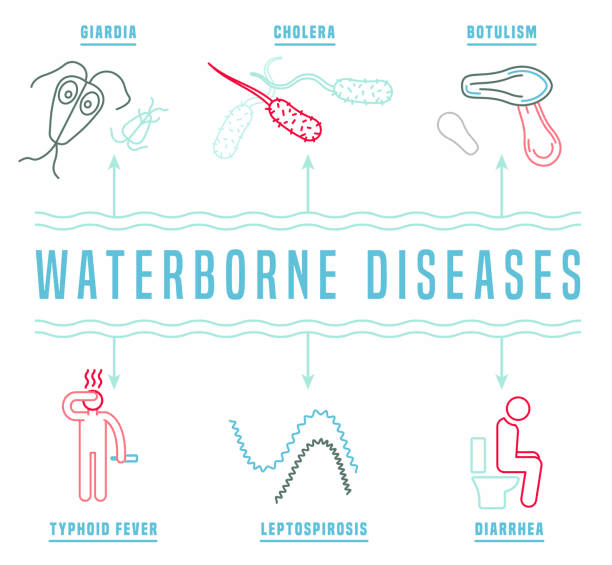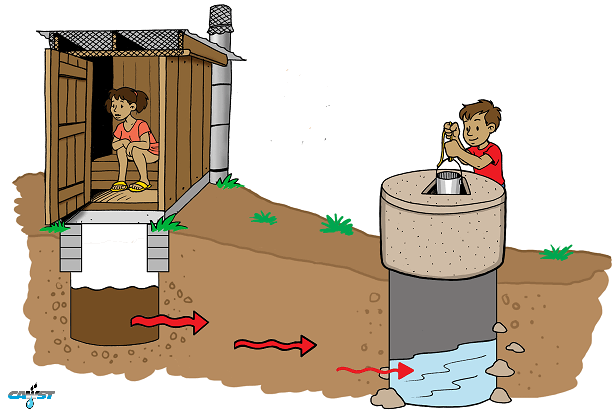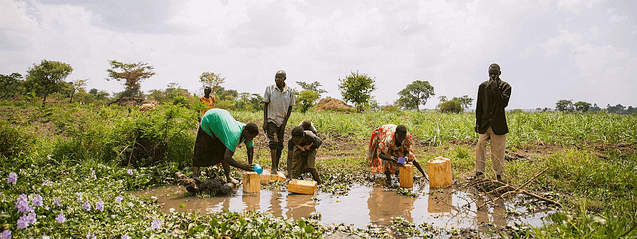Waterborne Diseases Areas for Travelers

Waterborne Diseases Areas for Travelers
Introduction
As adventurers investigate the most distant corners of the world, immersing themselves in the rich embroidery of societies and scenes, they’re additionally presented with different well-being chances. One huge concern is waterborne diseases, which can rapidly transform a fantasy excursion into a bad dream. In this article, we’ll dive into the domain of waterborne diseases, investigate high-risk districts, and give important insights into how travellers can shield their prosperity.
Contaminated water can result from different elements, including inadequate disinfection, inappropriate garbage removal, horticultural spillover, industrial contamination, and cataclysmic events like floods. Waterborne diseases are particularly common in regions with restricted admittance to clean drinking water and unfortunate sterilization offices.
Normal Waterborne Diseases
Exploring various areas of the planet opens travellers to different well-being gambles, including normal waterborne diseases. This segment dives into the most predominant diseases from contaminated water, for example, cholera, typhoid fever, hepatitis A, giardiasis, and cryptosporidiosis. Understanding these diseases, their side effects, and how they spread is significant for travellers. This information helps prevent and recognize these diseases immediately for brief treatment.

1. Cholera
Cholera is a profoundly infectious bacterial infection brought about by the Vibrio cholerae bacterium. It prompts serious looseness of the bowels and vomiting, resulting in quick drying out and, whenever left untreated, even demise. Cholera flare-ups are frequently linked to unfortunate sterilization and the absence of clean drinking water.
2. Typhoid Fever
The Salmonella typhi bacterium brings about typhoid fever. It spreads through contaminated food and water, leading to side effects like high fever, migraine, stomach pain, and loss of hunger. Typhoid fever can be dangerous if it is not treated expeditiously.
3. Hepatitis A
Hepatitis A is a viral infection affecting the liver. It spreads through contaminated water and food, causing side effects like jaundice, exhaustion, and nausea. Hepatitis A vaccines are accessible and prescribed for travellers to take a chance with regions.
4. Giardiasis
Giardiasis is a parasitic infection brought about by the Giardia parasite. It prompts the runs, abdominal issues, and nausea. The parasite is often found in water sources contaminated with excrement, making legitimate sterilization essential.
5. Cryptosporidiosis
The Cryptosporidium parasite brings about cryptosporidiosis and prompts watery, loose bowels, stomach spasms, and fever. It’s exceptionally impervious to chlorine disinfection, making it a test to eliminate from water supplies.
Countries Prone to Waterborne Diseases
In this part, we examine the nations and districts that are generally powerless against waterborne diseases. Understanding which regions represent the most noteworthy gamble can help travellers get ready sufficiently and play it safe. We’ll see continents like Sub-Saharan Africa, South Asia, Southeast Asia, and Latin America discussing the particular difficulties and disease pervasiveness in every one of these locales.

Identifying High-Hazard Locales
Here, we recognize and talk about the particular regions all over the planet where the gamble of contracting waterborne diseases is most noteworthy. Knowing these high-risk locales assists travellers with making informed choices about their destinations and the well-being and well-being safety measures they need to take.
1. Sub-Saharan Africa
Sub-Saharan Africa is among the locales most impacted by waterborne diseases—numerous nations in this space battle with restricted admittance to safe drinking water and legitimate disinfection offices. Diseases like cholera, typhoid fever, and looseness of the bowels remain common because of contaminated water sources and inadequate waste administration.
2. South Asia
South Asian nations, including India, Pakistan, Bangladesh, and Nepal, wrestle with elevated degrees of waterborne diseases. Fast populace development, urbanization, and insufficient sterilization infrastructure add to the spread of infections. Swarmed living circumstances and the dependence on contaminated water sources intensify the gamble.
3. Southeast Asia
Southeast Asian nations, like Indonesia, Cambodia, and Myanmar, also face huge waterborne disease challenges. Restricted admittance to clean water, combined with inadequate garbage removal frameworks, increases the commonness of sicknesses like hepatitis A, cholera, and diarrheal diseases.
4. Latin America
Certain districts in Latin America, particularly in rustic and underserved regions, experience a high weight of waterborne diseases. Inadequate disinfection offices and unfortunate cleanliness rehearsals add to the issue. Nations like Haiti have confronted cholera episodes linked to contaminated water sources.
Challenges and Contributing Elements
In this subsection, we dig into the variables contributing to the pervasiveness of waterborne diseases in certain districts. Understanding these difficulties, like the absence of infrastructure, poverty, and fast urbanization, gives insight into the underlying reasons for these gambles’ well-being.
1. Absence of Infrastructure
One normal test among these nations is the inadequate infrastructure for providing clean water and legitimate disinfection. The shortfall of useful water treatment plants and sewage frameworks opens populaces to untreated water sources.
2. Neediness and Restricted Assets
Some high-risk nations battle with neediness and restricted assets. These variables hinder their capacity to invest in disinfection projects, water treatment offices, and training on cleanliness rehearses.
3. Fast Urbanization
Fast urbanization in thickly populated regions strains existing water and disinfection frameworks. As individuals relocate to metropolitan centres, the interest in clean water and sufficient sterilization increases, frequently overwhelming the accessible assets.
Expected Arrangements
Focusing on possible arrangements, this part features how to battle waterborne diseases in high-risk areas. We examine the significance of infrastructure improvement, instruction, water quality monitoring, and admittance to clean water, providing a confident point of view toward addressing these medical problems.
1. Infrastructure Improvement
Investing in water treatment plants, sewage frameworks, and sterilization offices is critical for preventing waterborne diseases. International guides and organizations can be critical in supporting infrastructure improvement projects.
2. Instruction and Mindfulness
Promoting cleanliness instruction and raising mindfulness about the significance of clean water and disinfection can enable networks to embrace better practices.
3. Water Quality Monitoring
Standard water quality monitoring and testing programs can assist with identifying contaminated sources and going to preventive lengths instantly.
4. Admittance to Clean Water
Improving admittance to perfect and safe drinking water through initiatives like good development, water sanitization frameworks, and local area water sources can fundamentally decrease the gamble of waterborne diseases.
Transmission of Waterborne Diseases: Contaminated Water Sources
Travelers should be wary about the water they polish off. Regular water, untreated wells, and endless water from streams or lakes in high-risk regions can convey destructive microorganisms. Indeed, even in metropolitan centres, where water treatment offices exist, there’s as yet a gamble of contamination in certain locales.
Unfortunate Sterilization and Cleanliness
Inadequate disinfection offices and unfortunate cleanliness practices can compound the spread of waterborne diseases. Inappropriate garbage removal, open poo, and absence of admittance to clean offices add to the contamination of water sources.
Preventive Measures for Travelers
To guarantee a sound and pleasant journey, travellers can find proactive ways to minimize the gamble of waterborne diseases:
- Drinking Water Safeguards
- Individual Cleanliness Practices
- Vaccinations and Meds
- Staying Solid While Traveling
- Choosing Safe Food and Refreshments
- Hand Cleanliness in a hurry
- Protecting Against Insects
- Coping with Waterborne Sicknesses
- Recognizing Side effects
- Seeking Clinical Assistance Abroad.
Government Assets and Travel Cautions
Staying updated with the most recent information is key for safe travel. This segment underscores the significance of consulting government assets and heeding travel cautions, particularly concerning waterborne diseases. We investigate how these assets can direct travellers to make more secure travel decisions and stay sound while abroad.
Prevention Techniques
This subsection covers compelling techniques to forestall waterborne diseases, including admittance to clean water, further developed sterilization, individual cleanliness, boiling or purifying water, and vaccinations. These methodologies are urgent for travellers and the occupants of high-risk regions, offering a complete way to combat these diseases.

1. Admittance to Clean Water
Ensuring admittance to spotless and treated water is the groundwork for preventing waterborne diseases. Appropriate water treatment, filtration, and normal testing of water sources are fundamental for eliminating hurtful microorganisms.
2. Further Developed Sterilization
Legitimate disinfection offices, including sufficient sewage removal frameworks, lessen the gamble of contaminating water sources with human waste. Educating people groups about cleanliness practices is imperative to support appropriate waste administration.
3. Individual Cleanliness
Encouraging individual cleanliness rehearses, for example, washing hands before eating and in the wake of using the bathroom, forestalls the transmission of waterborne diseases.
4. Boiling or Purifying Water
In regions where the nature of water is sketchy, boiling water before utilization or using water-cleaning tablets can assist with eliminating destructive microorganisms.
5. Vaccinations
Vaccines for diseases like cholera and hepatitis are accessible and prescribed for individuals travelling to high-gamble locales. These vaccines give an extra layer of insurance against waterborne diseases.
Conclusion
While travel opens ways to incredible encounters, focusing on well-being and safety is fundamental. Travellers can explore the world with certainty by understanding waterborne diseases, recognizing high-risk locales, and adopting preventive measures. So leave your next experience outfitted with information and make recollections that will endure forever.
FAQs
Should I drink regular water in high-risk districts?
For the most part, it’s more secure to adhere to packaged or offered water here to avoid waterborne diseases.
What vaccines are advisable for me to consider before travelling?
Counsel medical services proficient at determining which vaccines are suggested in light of your destination.
How might I shield myself from waterborne ailments without sacrificing investigation?
You can partake in your travels while staying sound by practising great cleanliness, choosing safe food and drinks, and following neighbourhood well-being warnings.
Are waterborne diseases treatable?
Indeed, most waterborne diseases are treatable. Nonetheless, counteraction through safe practices remains the best methodology.
Where could I, at any point, find updated travel cautions and well-being warnings?
Government sites and international well-being associations are important assets for travel alarms and well-being information.
makodu.com







